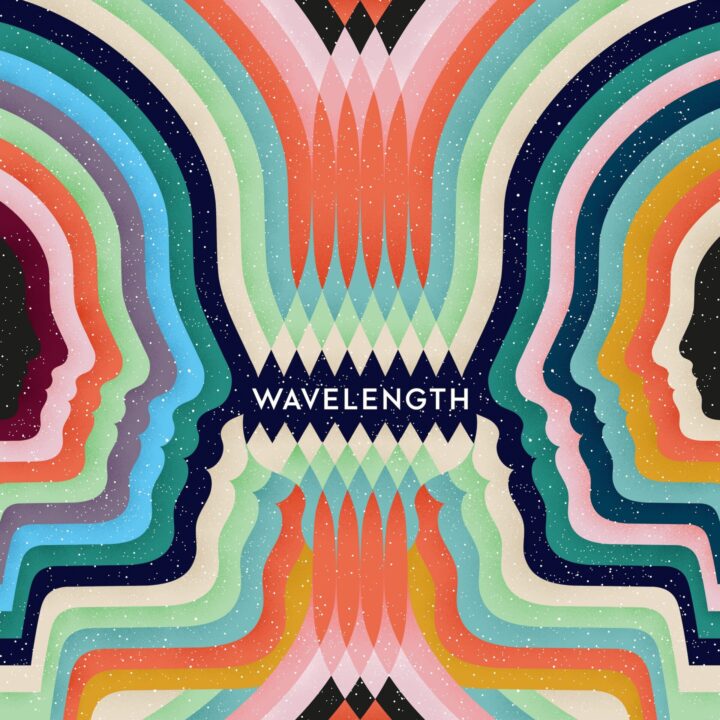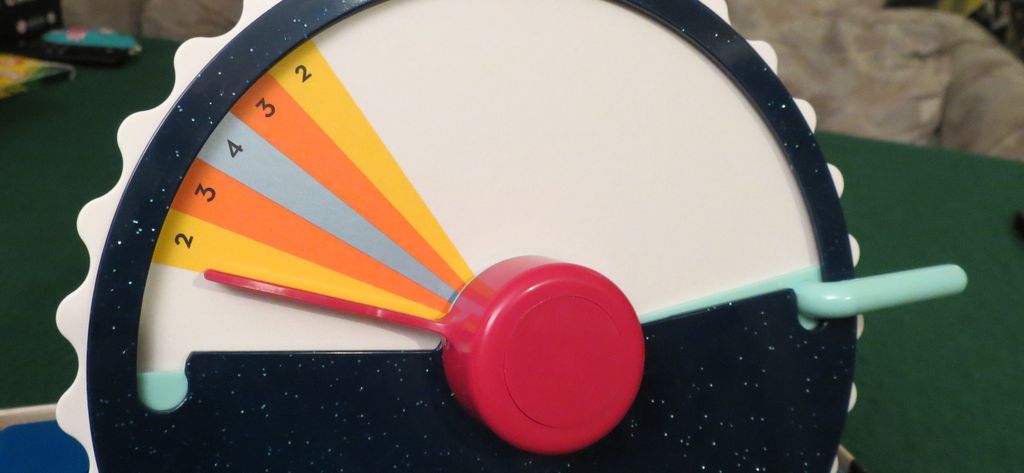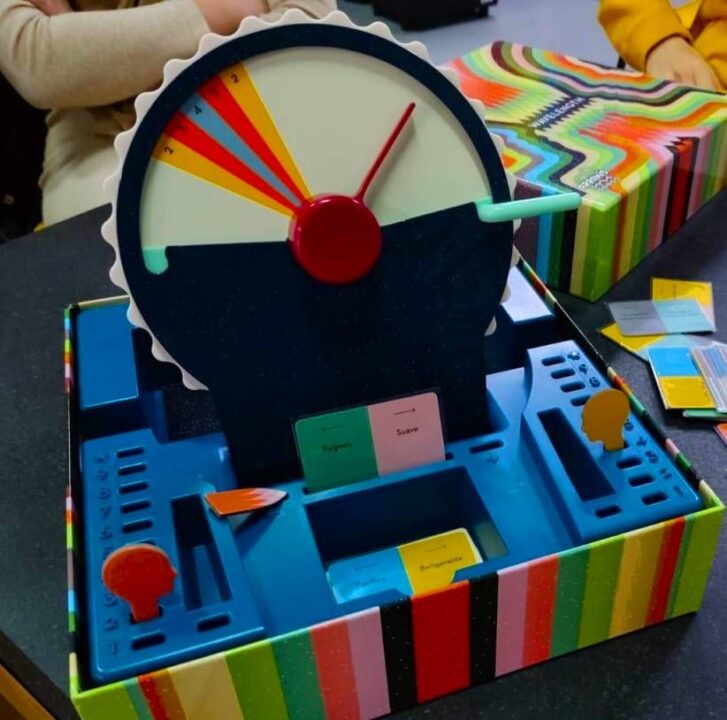Overview
Today, we’re diving into the world of ‘Wavelength,’ a board game that’s been sparking up game nights with its unique blend of strategy, luck, and social interaction. Stick around as we explore why this guessing game is a must-try for any party-goer or board game enthusiast looking for a fresh addition to their collection.
How It Plays
Get ready for some mind-bending fun with ‘Wavelength,’ a party game where players try to read each other’s minds to score points. It’s all about finding that perfect balance on an abstract scale. Let’s break it down into easy pieces so you can get to playing faster than you can say ‘psychic connection.’
Setting Up
First off, pop the game out of the box and set up the main attraction: the Wavelength dial. This colorful contraption has a window that reveals a spectrum, with a hidden bullseye that one team must try to hit. Divide your group into two teams, give the clue-giving role to someone who’s feeling particularly telepathic, and you’re almost there. Shuffle the cards and place them near the dial. Easy peasy!
Gameplay
The clue giver picks up a card and sees a spectrum, like ‘Hot – Cold’ or ‘Fantasy – Reality.’ Their job is to give a clue that makes their team guess where the hidden bullseye falls on that spectrum. The team discusses and turns the dial to where they think the bullseye is. After the guess, reveal the bullseye and see how close they were. Points are awarded based on accuracy, and then it’s the other team’s turn.
Winning the Game
The game goes back and forth until a team scores a set number of points (decide at the start, but 10 works well for a quick game). Scoring exactly on the bullseye scores big, while getting close still nets you some points. The team with the most points at the end of the game wins, crowned as the ultimate mind readers.
Want to know more? Read our extensive strategy guide for WaveLength.
Discover the Heart of ‘Wavelength’: A Game of Guesses and Giggles
Right off the bat, ‘Wavelength’ sets itself apart from your usual board game affair with its guessing mechanics that are as unique as they come. Imagine trying to read your friends’ minds, but in a fun and totally non-creepy way. That’s ‘Wavelength’ in a nutshell. At its core, it revolves around a dial hidden behind a screen where one player, the clue-giver, knows the exact position. They must then give a clue that leads their team to guess where the dial is set between two opposites, like ‘hot’ or ‘cold’. Sounds simple, right? But when your clue lands your team’s guess smack dab in the middle when you were aiming for ‘hot’, the room explodes in laughter and arguments – the good kind, of course.
But don’t let the fun stop there, as ‘Wavelength’ isn’t just about guessing. It’s a gateway to the loudest and most lively discussions you’ll have, leading us perfectly into the next section: Party game dynamics and social interaction.
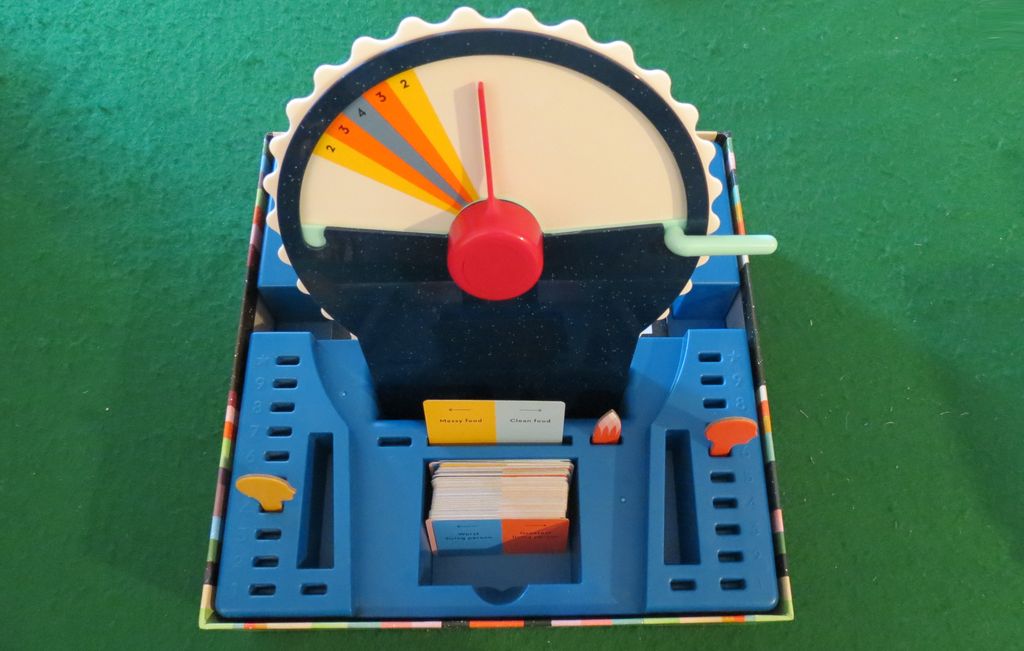
Unleash the Party with Wavelength’s Social Spectacle
When it comes to getting everyone off their phones and into the heart of the action, Wavelength is a champion. This game doesn’t just sit on the table; it dances, laughs, and practically throws its own party. The beauty of it lies in its simplicity to understand but complexity to master, making it a hit across a wide audience. Imagine the scene: friends, family, or even new acquaintances, huddled around, buzzing with anticipation for the next reveal. It’s that moment of collective suspense, followed by bursts of laughter or groans of disbelief, that cements Wavelength as a top-tier social interaction game.
The dynamics encourage not just teamwork but also a gentle competition. Everyone gets a turn to play psychic, trying to tune into the group’s wavelength, which adds layers of strategy to the social mix. It’s a game that reminds us that winning is fun, but laughing together is the real victory.
With our spirits already high from the great company and gameplay, let’s turn our attention to the next highlight: the quality and design of game components.
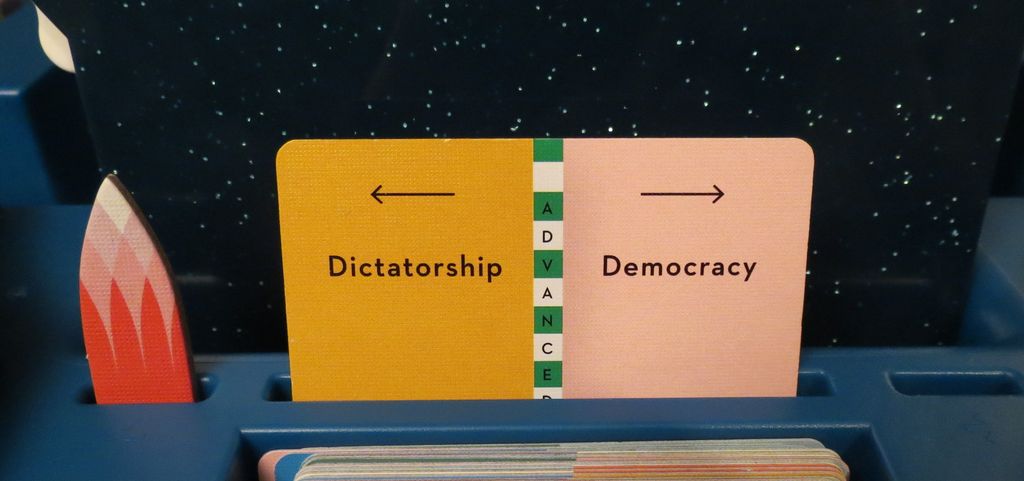
Stunning Quality and Design of Wavelength’s Components
Let’s talk about what you physically get with Wavelength. First off, this game is a beaut. The moment you pop open the box, you’re greeted with vibrant colors and a sleek design that screams ‘play me.’ And it’s not just about looks; the components feel as good as they look. The main attraction, the wavelength dial, has a satisfying smoothness to it when you spin. The cards? Sturdy and durable, ready to face countless game nights. And those little plastic windows on the dial? They might seem small, but oh boy, do they add to the excitement, revealing just enough to keep everyone on their toes. Quality and design aren’t just checkboxes for this game; they’re a big part of what makes it so darn engaging.
Next up, let’s see how Wavelength balances the scales between strategy and luck.
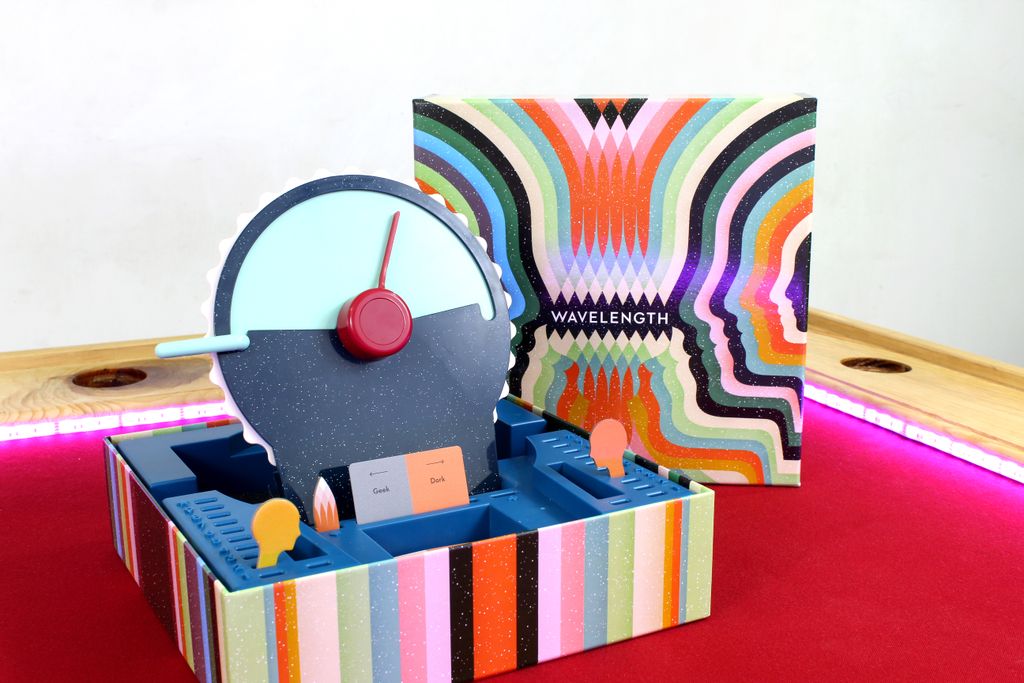
Mastering the Balance: Strategy vs. Luck in Wavelength
When it comes to Wavelength, you’re not just tossing dice or flipping cards hoping for the best. Nope, this game’s all about that sweet spot between brain power and the whims of fate. You see, players need to tune in to each other’s thought waves, making educated guesses based on partial information. It’s like trying to read your friend’s minds without the superpowers. Sure, there’s a bit of luck involved – you can’t control the wheel’s stop point, after all. But it’s your team’s strategy, your collective brain flex, that really steers the ship. Winning isn’t about the luck of the draw; it’s about how you interpret and communicate those subtle hints.
So, would I recommend Wavelength? Absolutely! It’s a brilliant blend of chance and tactics, perfect for game nights that need a dash of both.
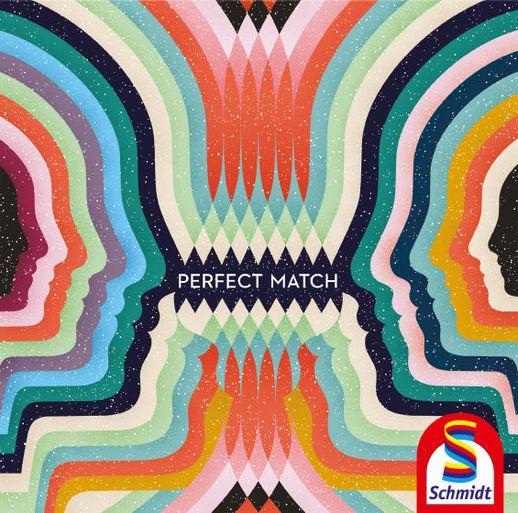
Conclusion
Wrapping up, ‘Wavelength’ is a stellar addition to any game night, blending a unique mix of guessing, strategy, and luck with vibrant social interaction. Its high-quality components and sleek design only add to the enjoyment. While it leans more on mind-reading skills than pure chance, it strikes a fun balance that keeps everyone engaged. If you’re looking for a game that brings people together and sparks lively discussions, ‘Wavelength’ is definitely worth checking out. Just gather your friends, and get ready for some laughs and good-natured competition. That’s all for this review, and I hope it helps you decide whether ‘Wavelength’ is the next must-have for your collection!

